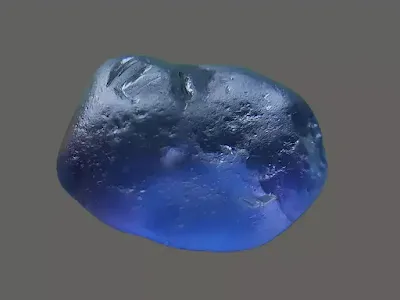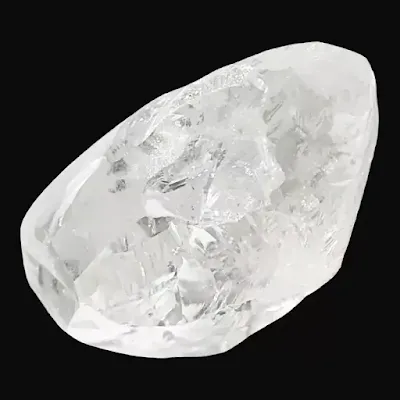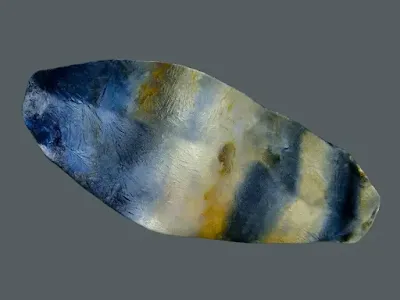Sapphire: Colors and Types of Sapphire (Photos)
Sapphire is a precious gemstone belonging to the corundum mineral family. While blue is the most well-known and traditional color for sapphires, they actually come in a variety of colors. The different colors of sapphire are often attributed to the presence of certain trace elements in the crystal structure.
The name sapphire is derived via the Latin sapphirus from the Greek sappheiros (σάπφειρος), which referred to lapis lazuli. It is typically blue, but natural "fancy" sapphires also occur in yellow, purple, orange, and green colors; "parti sapphires" show two or more colors. Red corundum stones also occur, but are called rubies rather than sapphires.
Sapphires are found in various locations worldwide. Notable sources include Myanmar, Sri Lanka, Thailand, Australia, Madagascar, and the United States.
Sapphires have a hardness of 9 on the Mohs scale. This makes them one of the hardest gemstones. Their hardness contributes to their durability and resistance to scratches, making them suitable for everyday wear in various types of jewelry.
Some sapphires may exhibit fluorescence, a phenomenon where the gem glows when exposed to ultraviolet light. Fluorescence can impact the appearance of the stone and is taken into consideration when assessing its overall quality.
 |
| Sapphire: Colors and Types of Sapphire (Photos) |
Colors and types of sapphire
Blue Sapphire
 |
Blue Sapphire |
The blue sapphire is the most popular variety of sapphire, a gemstone known for its beauty and durability. Sapphires come in a variety of colors, but blue is the most prized. Blue sapphires range in color from a light, almost translucent blue to a deep, velvety royal blue. The most valuable blue sapphires have a rich, cornflower blue color with a slightly violetish hue.
Blue sapphires are found in many parts of the world, including Sri Lanka, Kashmir, Madagascar, Thailand, and Australia. Kashmir sapphires are considered to be the most valuable, due to their deep, velvety blue color.Blue sapphires are a popular choice for engagement rings and other jewelry. They are also used in industrial applications, such as scratch-resistant windows and bearings.
Pink Sapphire
 |
| pink sapphire |
Pink sapphires are a beautiful and captivating variety of the mineral corundum, prized for their soft and lively pink hues. Their color ranges from a light, bubblegum pink to a rich, hot pink, and even to a deep magenta. Some pink sapphires can even have a violet tinge, making them even more unique.
Pink sapphires are one of the rarest colors of sapphires, making them more valuable than their common blue counterparts.
Pink sapphires come in a wide range of pink hues. The most desirable colors are typically vivid and saturated, but lighter pinks are becoming increasingly popular.
Their pink color is caused by trace elements of chromium within the corundum crystal. The deeper the pink hue, the more chromium is present.
Due to their durability and beautiful colors, pink sapphires are popular gemstones in engagement rings, earrings, necklaces, and other fine jewelry.
Pink sapphires are associated with love, compassion, and femininity. They are also believed to promote truth, forgiveness, and acceptance.
Padparadscha Sapphire
 |
Padparadscha sapphire crystal |
Padparadscha Sapphire is An extremely rare and valuable sapphire with a unique color that is a blend of pink and orange. The name itself comes from the Sinhala word "padmaraga," which translates to "lotus flower" in reference to the stone's vibrant color that resembles the delicate petals of a lotus blossom.
Padparadscha sapphires are one of the rarest varieties of sapphires, even rarer than the popular blue sapphires. This rarity is due to the very specific geological conditions required for their formation, resulting in a limited supply and high demand.
The defining characteristic of a padparadscha sapphire is its color. It exhibits a harmonious mix of pink and orange, with neither color overpowering the other.
The primary source of padparadscha sapphires is Sri Lanka, particularly the Ratnapura district. However, smaller deposits have also been found in Madagascar and Tanzania.
Due to their rarity and beauty, padparadscha sapphires command high prices in the gemstone market.
Green Sapphire
 |
| Green sapphire crystal |
Green sapphires come in a range of colors, from a light mint green to a deep, almost emerald-like green, with some stones even exhibiting hints of blue or yellow. These beautiful gemstones are a popular choice for jewelry due to their vibrant color, durability, and affordability compared to some rarer green gemstones like emeralds.
The presence of iron during crystal formation replaces some of the aluminum in the corundum structure, resulting in the characteristic green hues.
Green sapphires are less common than blue sapphires but more abundant than the coveted padparadscha sapphires.
Green sapphires are associated with growth, prosperity, renewal, and healing. They are also believed to promote harmony, peace, and emotional well-being.
Purple Sapphire
 |
| Purple Sapphire |
Purple Sapphire ranges from a light lavender to a deep reddish-purple. Purple sapphires are a relatively rare variety of sapphire, but they are becoming increasingly popular. The mesmerizing color of purple sapphires is caused by trace amounts of iron and titanium within the corundum crystal structure. The specific combination and amounts of these elements determine the final shade of purple.
Unlike many other colored gemstones that require treatments to enhance their color, purple sapphires are often untreated, showcasing their natural beauty.
Purple sapphires are found in various locations around the world, with some of the most notable sources being Sri Lanka, Madagascar, Tanzania, and Kenya. Due to their captivating colors, durability, and relative rarity, purple sapphires are popular gemstones in a variety of jewelry pieces. They are a perfect choice for engagement rings, necklaces, earrings, and other fine jewelry, adding a touch of elegance and sophistication.
Purple sapphires are associated with royalty, luxury, wisdom, and creativity.
Orange Sapphire
 |
| Orange Sapphire crystal |
Orange sapphires get their color from a combination of trace elements like iron, titanium, and vanadium within the corundum crystal structure. The exact balance of these elements determines the final shade of orange, which can range from a light yellowish-orange to a deep reddish-orange. Orange sapphires are rarer than most other colored sapphires, except for the padparadscha variety.
Orange sapphires are considered rare, but not extremely rare. Most orange sapphires on the market have undergone heat treatment to enhance or stabilize their color. Natural, untreated orange sapphires are much rarer and more valuable, especially for those with a vivid orange color.
Orange sapphires are found in various locations around the world, with some of the most notable sources being Madagascar, Sri Lanka, Tanzania, and Australia.
Orange sapphires are associated with energy, passion, creativity, and joy. They are also believed to promote motivation, enthusiasm, and self-expression.
White Sapphire - Colorless
 |
| white sapphire (colorless) |
White Sapphire technically colorless sapphires. White sapphires are a more affordable alternative to diamonds and can be very brilliant gemstones. Unlike other sapphires that get their vibrant colors from trace elements, white sapphires are virtually free of these impurities, resulting in their colorless and transparent appearance.
The lack of color allows the gemstone to showcase a dazzling fire, the play of light that creates a rainbow of colors within the stone.
While not as common as blue sapphires, white sapphires are still relatively rare, making them more valuable than colorless gemstones like cubic zirconia.
White sapphires are a versatile gemstone used in a wide variety of jewelry pieces, including engagement rings, earrings, necklaces, and pendants.
White sapphires are associated with purity, truth, wisdom, and new beginnings.
Parti Sapphire
Parti sapphires are a unique variety of sapphires that display more than one color within a single stone. They are also known as bi-color or tri-color sapphires. The different colors in a parti sapphire are caused by variations in the presence of trace elements during the gemstone's formation. Common color combinations include blue and green, yellow and green, or blue and yellow. Rarer stones may show combinations of purple, lavender, orange, or pink. The way these colors are distributed within the stone can also vary greatly, creating a variety of patterns and effects, such as stripes, patches, or even color-changing effects.
Every parti sapphire is one-of-a-kind, due to the natural variations in color and pattern.
Parti sapphires have gained popularity in recent years among collectors, jewelry designers, and consumers seeking distinctive and unconventional gemstones. Their rarity and visual appeal contribute to their growing demand in the market.
Star Sapphires
 |
| Star sapphires |
Star sapphires can be any color of sapphire, but they have a unique asterism, a six-rayed star that appears to float across the surface of the stone when cut en cabochon (polished but not faceted). This asterism is caused by the presence of rutile needle inclusions within the gemstone.
Conclusion
In the world of gemstones, sapphires stand out for their remarkable diversity of colors and types. Whether you are drawn to the classic allure of blue sapphires or the vibrant spectrum of fancy colored varieties, each gem tells a unique story of its origin and formation. As you explore the world of sapphires, you'll discover a kaleidoscope of natural beauty, each gemstone a testament to the earth's geological artistry.





%20(1).webp)



